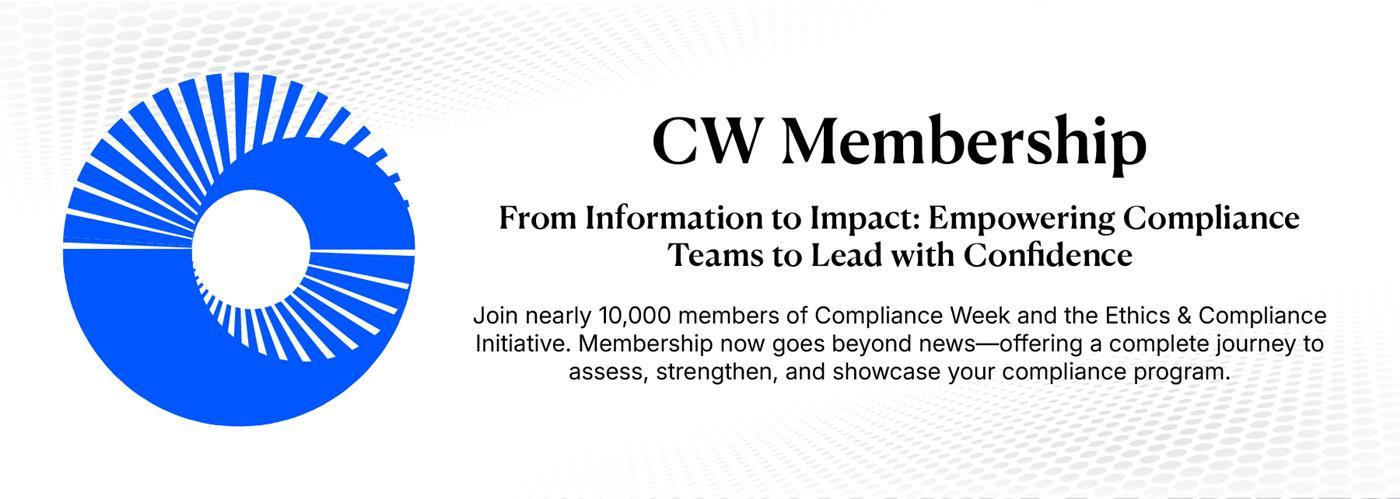- Home
-
News
- Back to parent navigation item
- News
- National Compliance Officer Day 2025
- Accounting & Auditing
- AI
- AML
- Anti-Bribery
- Best Practices
- Boards & Shareholders
- Cryptocurrency and Digital Assets
- Culture
- ESG/Social Responsibility
- Ethics & Culture
- Europe
- Financial Services
- Internal Controls
- Regulatory Enforcement
- Regulatory Policy
- Risk Management
- Sanctions
- Surveys & Benchmarking
- Supply Chain
- Third Party Risk
- Whistleblowers
- Opinion
- Benchmarking
- Certification
- Events
- Research
- Awards
-
CW Connect
- Back to parent navigation item
- CW Connect
- Sign In
- Apply
- Membership
How Microsoft turned one practitioner into a versatile analytics guru
By Alan Gibson2019-09-24T19:21:00

Guest columnist Alan Gibson explains how his role as assistant general counsel in Microsoft’s Office of Legal Compliance helped his transition into a world of managing risks through algorithms, machine learning, and digital solutions.
THIS IS MEMBERS-ONLY CONTENT
You are not logged in and do not have access to members-only content.
If you are already a registered user or a member, SIGN IN now.
Related articles
-
 Article
ArticleRegulators catching up on use of analytics; compliance better take notice
2020-12-14T19:23:00Z By Aaron Nicodemus
If your company isn’t making optimal use of data to enhance its compliance program, now is the time to start—before it’s too late.
-
 Article
ArticleCase study: How 3M uses predictive analytics
2019-11-11T18:32:00Z By Jaclyn Jaeger
At a recent virtual conference, Michael Duran, chief ethics and compliance officer at 3M, shared in candid detail lessons learned from the company’s journey toward predictive analytics.
-
 Premium
PremiumQ&A with FINRA’s Greg Ruppert on the organization’s use of Artificial Intelligence
2025-12-19T20:33:00Z By Aaron Nicodemus
Greg Ruppert, Chief Regulatory Operations Officer at the Financial Industry Regulatory Authority (FINRA), recently shared insights with Compliance Week regarding the self-regulatory organization’s use of Artificial Intelligence in monitoring trends in the market, spotting threats, and keeping its members informed.
More from Opinion
-
 Opinion
OpinionWhat the Copilot Usage Report 2025 Means for Corporate Compliance
2025-12-18T18:48:00Z By Tom Fox
Microsoft’s Copilot Usage Report 2025 offers compliance professionals a rare, data-driven look at how artificial intelligence is actually being used by millions of people, rather than how organizations assume it is being used.
-
 Opinion
OpinionEmerging antitrust risks in the expanded use of AI
2025-12-16T19:24:00Z By Lee F. Berger and Robert Klotz, CW guest columnists
Concerns over competitors using AI pricing tools to fix prices have dominated antitrust discussions in the U.S. and EU. Recent cases show how algorithmic pricing might enable unlawful coordination.
-
 Opinion
OpinionHow to make the business case to upgrade records management systems
2025-12-10T15:29:00Z By Mark Diamond, CW guest columnist
Companies are giving their records management programs a makeover, and not for the reasons you may think. What used to be a sleepy back-office legal department function is now front and center, often driven by compliance teams. Organizations are discovering that a “save everything, forever” de facto policy doesn’t ...
- Terms and Conditions
- Privacy Policy
- Do Not Sell My Info
- © 2025 Compliance Week
Site powered by Webvision Cloud






